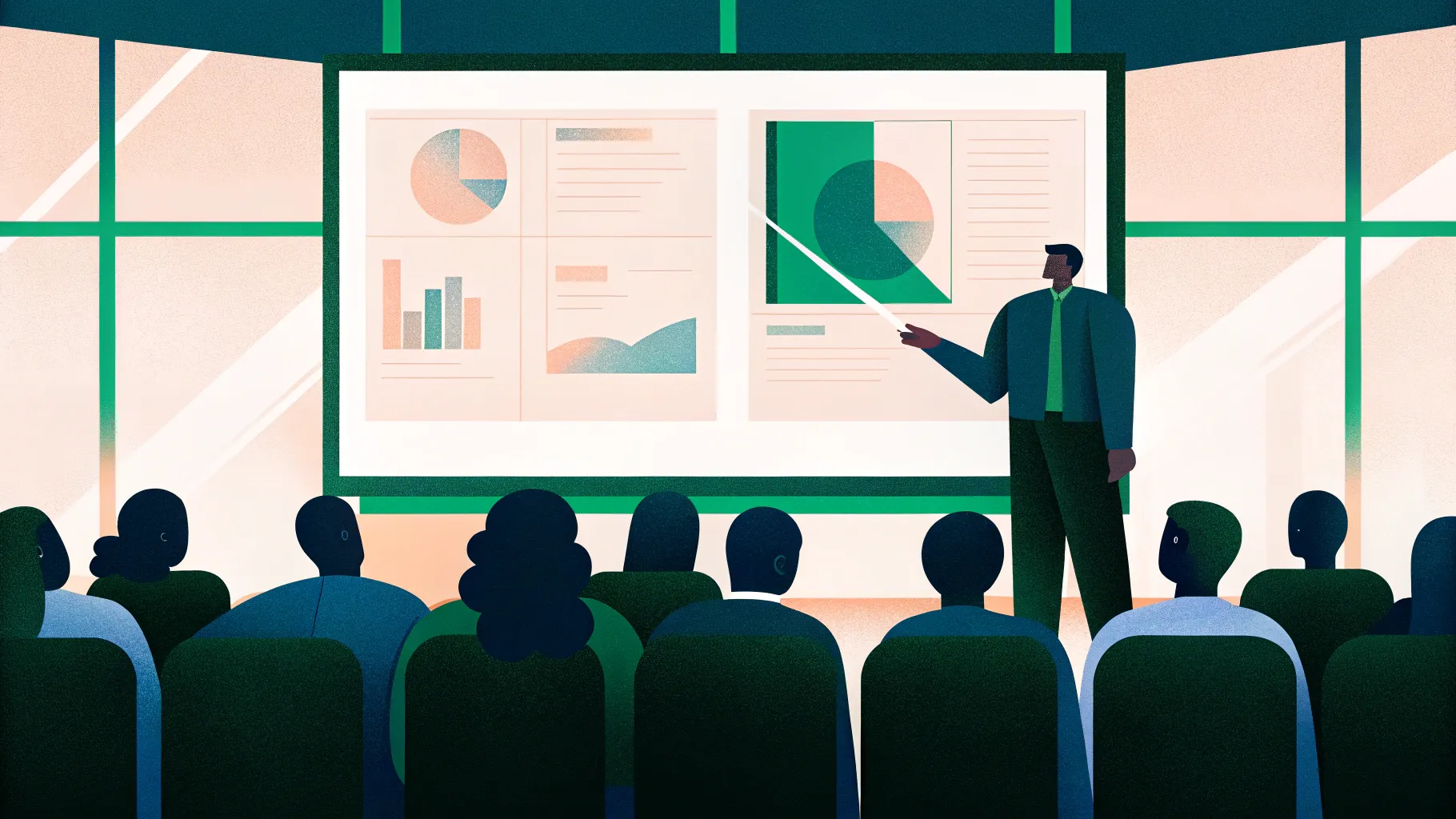
Storytelling is an art that transcends mediums—from films and books to poems and plays. But did you know it’s also the secret weapon behind the most persuasive consulting presentations? In this comprehensive guide, inspired by insights from Dan Galletta, you’ll learn how top consulting firms like McKinsey, BCG, and Bain craft compelling storylines that influence decision-makers and drive action. Whether you’re an aspiring consultant, business professional, or someone eager to master PowerPoint storytelling, this article will teach you the proven 3-step framework these firms use to create slide decks that don’t just inform but persuade.
We’ll break down the famous SCR (Situation, Complication, Resolution) or SCQA (Situation, Complication, Question, Answer) framework, explore practical tips on writing storylines using the dot-dash method, and reveal how to build slide skeletons that ensure your presentations flow logically and powerfully. By the end, you’ll be equipped to transform your data and analysis into executive-ready slide decks that tell a clear, compelling story.
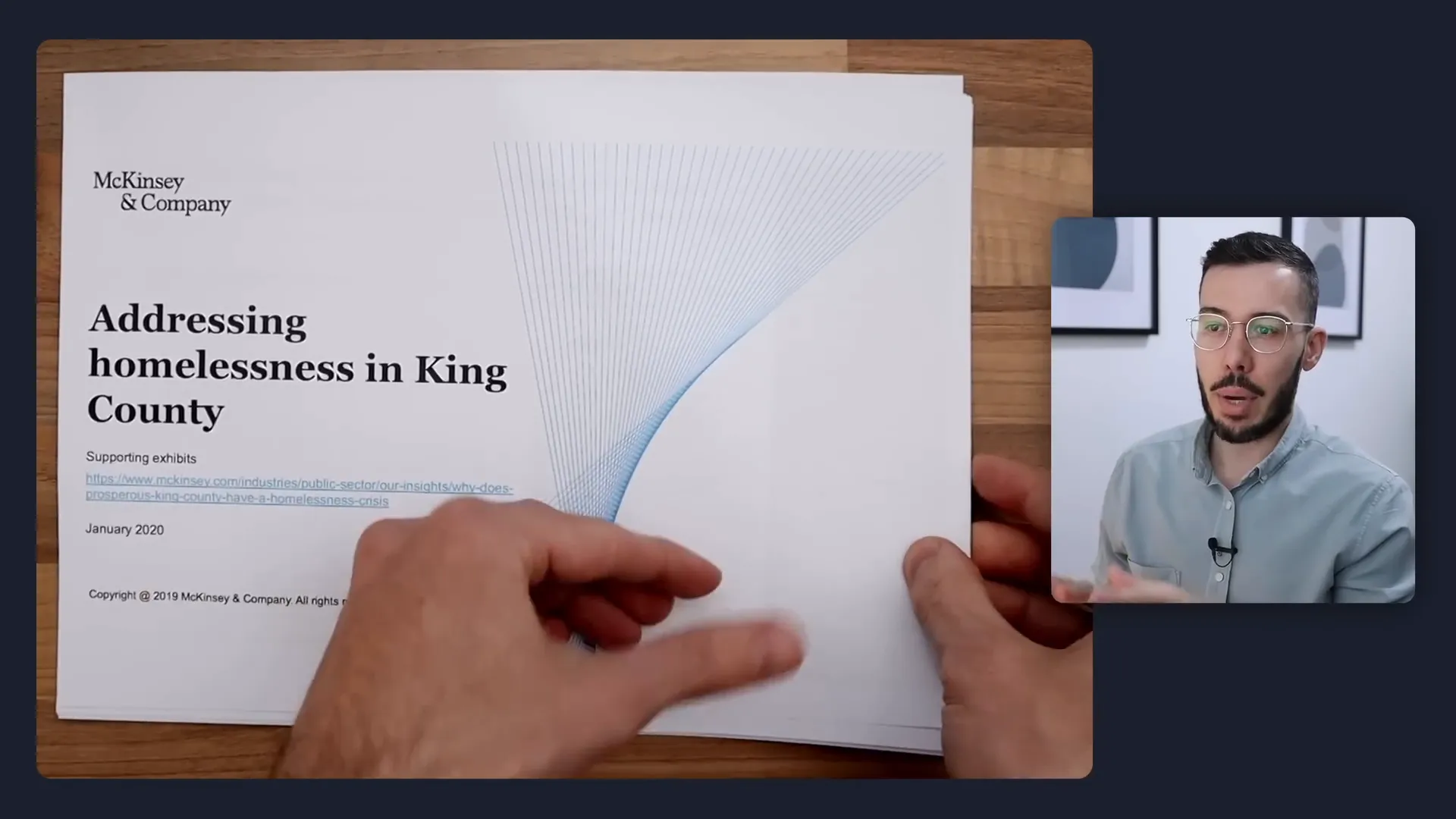
When McKinsey starts a project, their goal isn’t to produce a presentation that simply sits on a shelf gathering dust. Their objective is clear: influence clients to implement their recommendations. This is where storytelling becomes crucial. It’s not just about presenting facts; it’s about weaving those facts into a narrative that persuades clients to take action.
Consulting firms don’t rely solely on stakeholder management or client meetings to influence decisions. Instead, the slide deck itself is meticulously designed to guide the client through a logical, compelling argument. The storyline embedded in the deck becomes the vehicle that shapes perceptions, clarifies complex issues, and ultimately drives change.
This approach is why the storyline is considered the most important element of a consulting slide deck. A well-crafted storyline persuades, while a weak or unclear one fails to move the audience.
Top consulting firms have distilled storytelling into a science, identifying a universal structure that works across industries and topics. This structure is known as SCR or SCQA:
This framework isn’t unique to consulting—it’s the backbone of stories everywhere, from movies to novels. McKinsey, for example, prefers the SCR variant but often incorporates the implied question (Q) to sharpen the narrative flow.
The situation sets the stage. It gives your audience the prior context they need to understand the story. This means presenting relevant background information and framing the problem in a way that highlights its importance.
For example, in a project addressing homelessness in King County, the situation might describe the rising homelessness rates and the social challenges associated with it.
The complication introduces the problem or disruption. It explains why the situation is problematic and why it requires urgent attention. This step is key to creating tension and engaging the audience’s interest.
In the homelessness example, the complication could be that the problem is worsening because rental costs are increasing faster than incomes, making housing unaffordable.
The question is the natural inquiry that arises from the complication: “What should we do?” While often not explicitly stated in presentations, this question guides the transition to the resolution.
The resolution provides the answer to the question. It outlines the recommended course of action, supported by data and analysis. This is the “so what” that clients need to hear to move forward.
For King County, the resolution might recommend investing in affordable housing as a cost-effective solution to homelessness.
To see this framework in action, let’s examine how McKinsey applied it in a project addressing homelessness in King County, Seattle. The team produced a slide deck that, on the surface, looks like a traditional consulting presentation. But beneath it is a carefully structured storyline that follows the SCR format.
By extracting the slide titles and mapping them to the SCR framework, we find that:
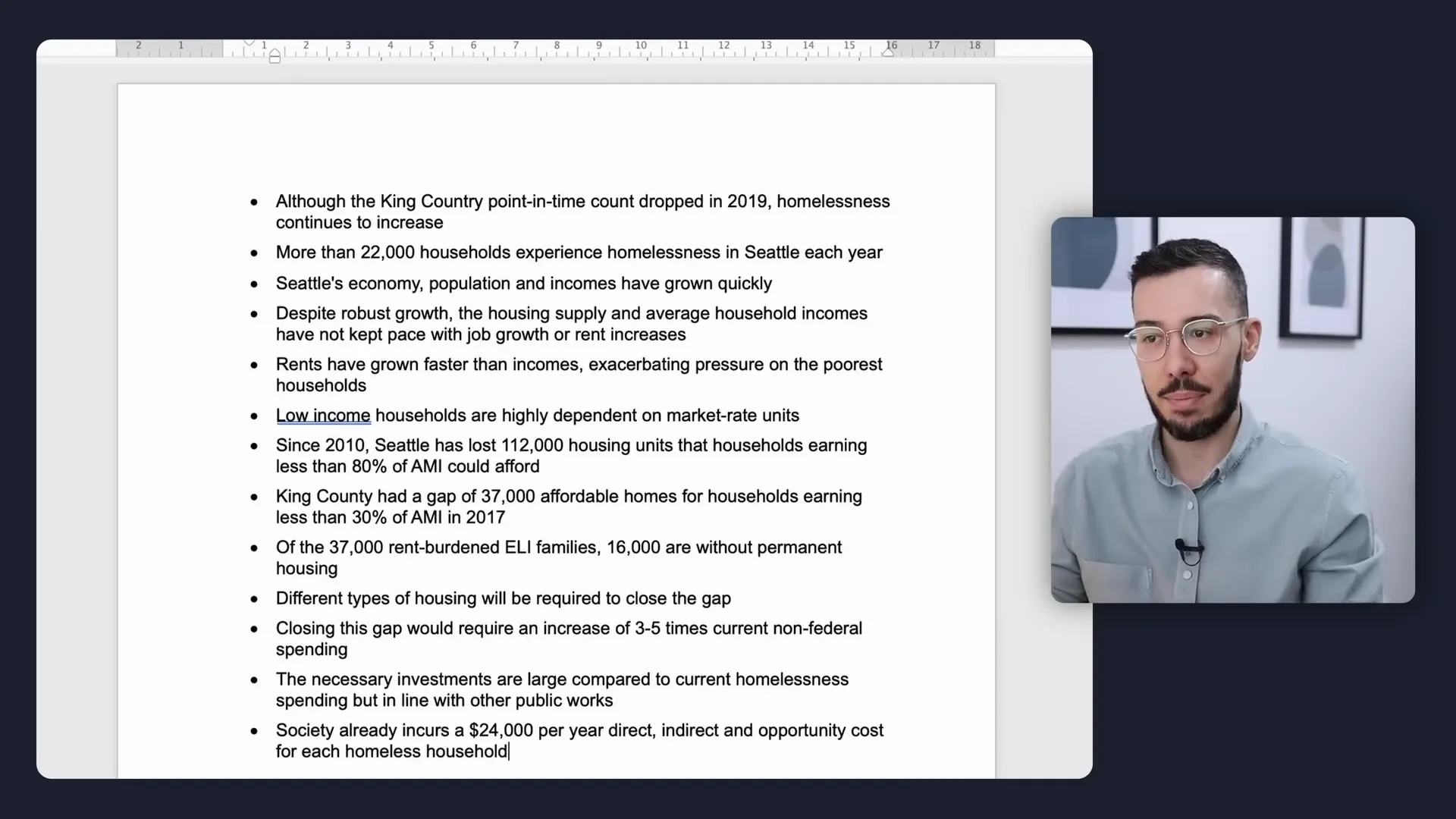
Summarizing the entire storyline in three sentences:
This example illustrates how SCR is subtly embedded in consulting decks to craft persuasive narratives.
Understanding the framework is one thing; applying it effectively is another. Here’s a step-by-step guide to writing storylines that influence, based on best practices from McKinsey and other top firms.
Before you start storylining, ensure you have completed all your analysis and synthesis. You need clear conclusions or recommendations to package into your storyline. Storylining is about presenting your conclusions persuasively, not discovering them.
A common mistake is to jump straight into PowerPoint after finishing analysis. Instead, start in Word for three key reasons:
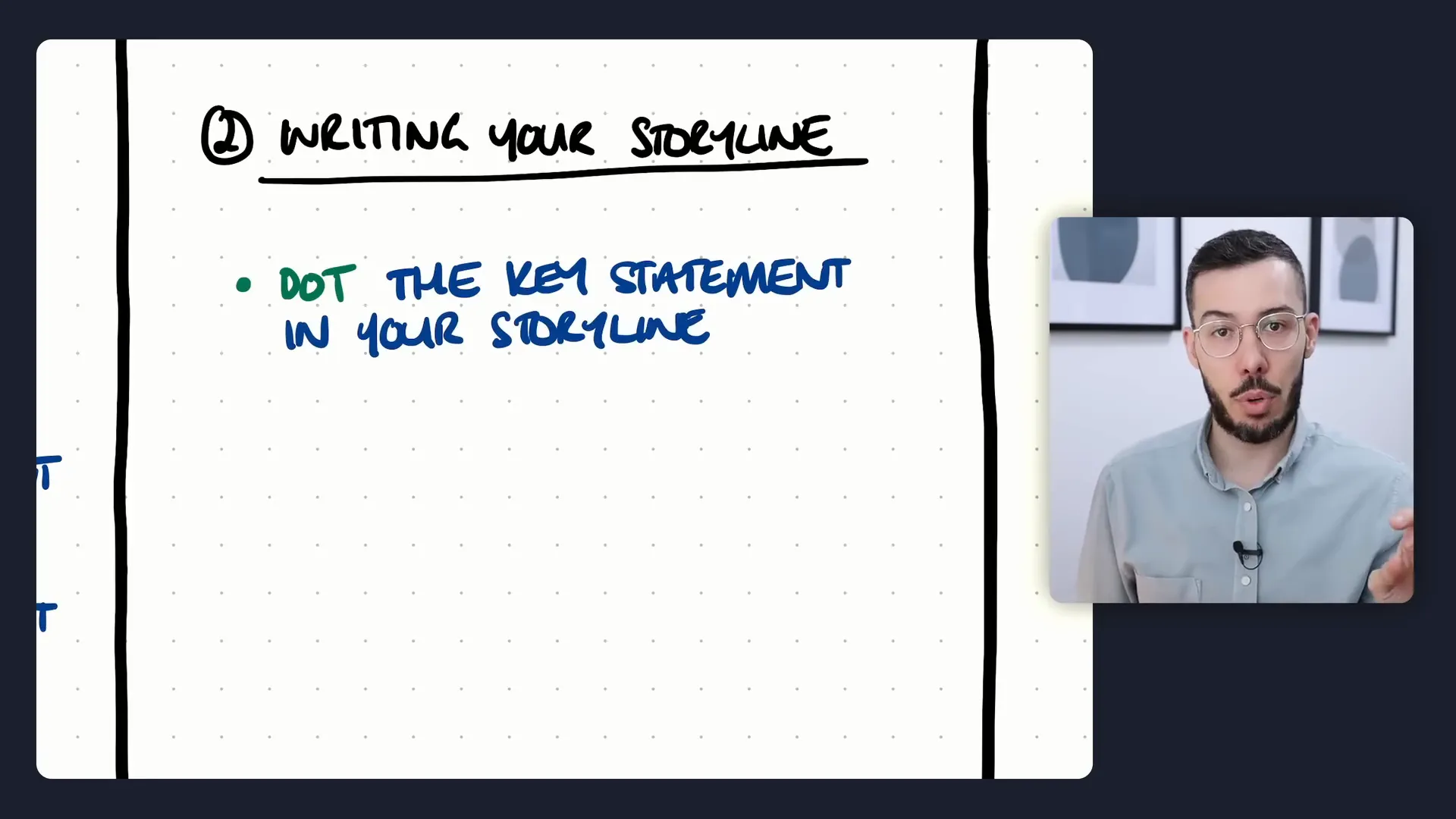
McKinsey advocates a simple but powerful dot-dash structure for storylining:
This structure ensures every claim you make is backed by evidence, making your argument airtight and credible.
This method helps you maintain clarity and focus while ensuring that your storyline is data-driven.
Once you’ve drafted your storyline, review it with your manager or key stakeholders. Expect feedback and be ready to revise. This iterative process is crucial to refine your argument, ensure proper positioning for your audience, and eliminate any logical gaps or contradictions.
Importantly, finalize your storyline in Word before starting to build your slides. Making changes later in PowerPoint can be time-consuming and inefficient, often requiring slide rebuilds.
With a finalized storyline in hand, you’re ready to open PowerPoint and begin building your slide skeleton. Two key components of every slide are:

When designing your slide deck, pay attention to two logical flows:
Because you drafted your storyline using the dot-dash structure, this transition to slides is straightforward. The dots become your action titles, and the dashes become your charts and visuals.
While you can often copy your dots directly as slide titles, some refinement may be needed for clarity, impact, or brevity. The goal is to make the title a powerful standalone statement that guides the reader through the story.
Although the focus here is on storylining, it’s worth noting that translating your supporting data into compelling visuals is equally important. Clear charts, graphs, and visual elements strengthen your argument and make complex data accessible.
Dan Galletta shares a simple methodology for transforming data into visuals that complement your storyline. If you’re interested in mastering this skill, consider exploring further resources or courses that specialize in consulting-style slide deck creation.
Let’s recap the essential lessons for crafting persuasive PowerPoint presentations inspired by McKinsey’s approach:
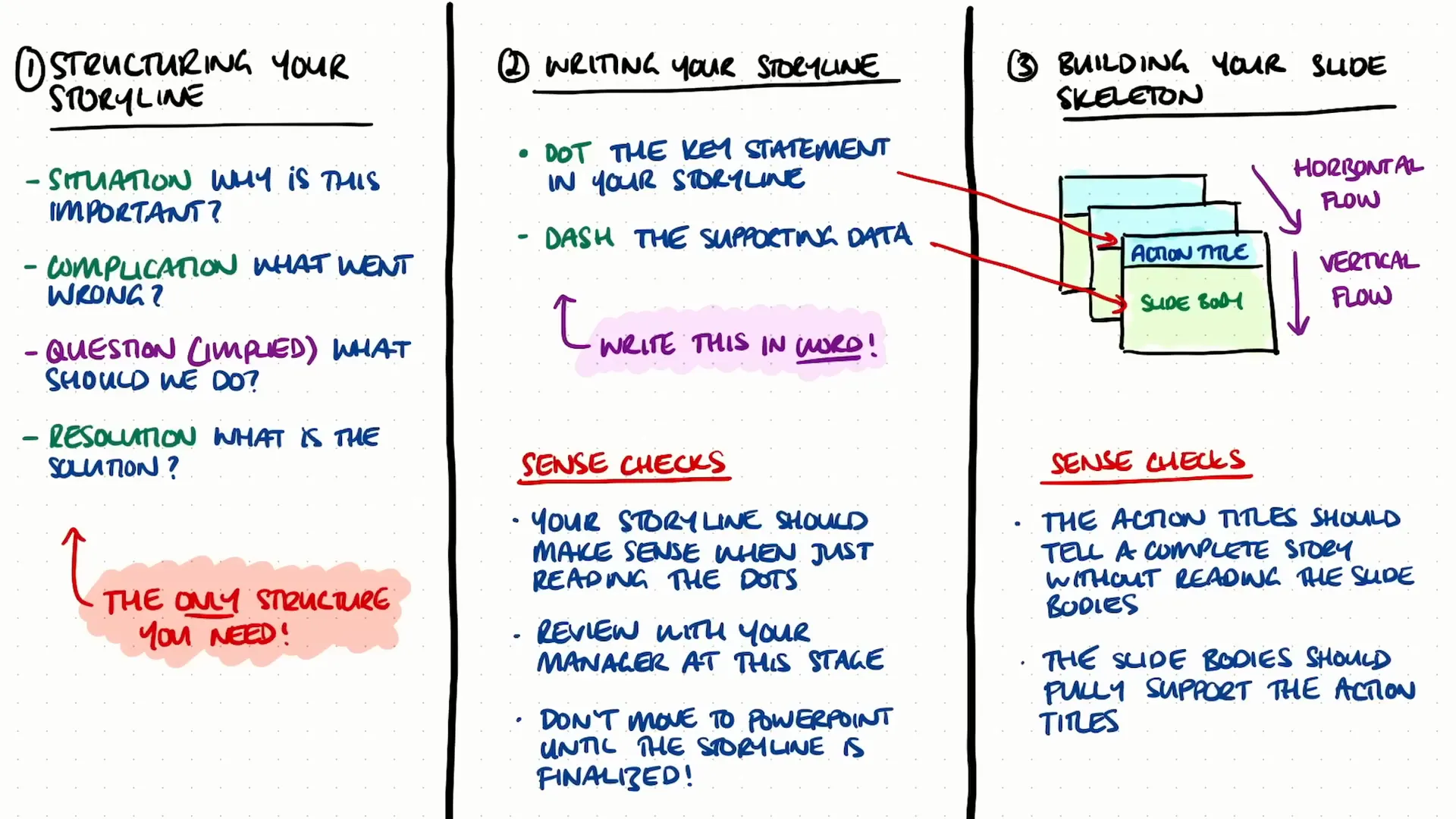
Mastering this process will elevate your presentations from simple information dumps to compelling narratives that drive decisions and change. Whether you’re pitching to executives, presenting research findings, or leading strategic discussions, the power of storytelling can make all the difference.
The SCR (Situation, Complication, Resolution) or SCQA (Situation, Complication, Question, Answer) framework is a storytelling structure used by top consulting firms to craft persuasive narratives. It sets the context, introduces a problem, implies a key question, and provides a solution.
Word allows you to see the entire storyline on one page, making it easier to read, review, and iterate. It also helps you spot logical inconsistencies that are hard to detect when spread across multiple slides in PowerPoint.
The dot-dash structure is a method where each main point or key statement is a “dot” (bullet point), and underneath are “dashes” that provide supporting data or evidence. This structure ensures your storyline is clear and backed by facts.
Focus on two types of flow: horizontal flow, where action titles across slides tell a complete story, and vertical flow, where each slide’s body supports the action title fully with data and visuals.
Absolutely. The SCR/SCQA framework is a universal storytelling structure that can be used in business presentations, reports, marketing materials, and even creative writing. It helps clarify your message and engage your audience effectively.
Storylining is an iterative process. Share your draft with managers or stakeholders, gather their feedback, and revise accordingly. Finalize your storyline before building slides to avoid rework.
Storytelling in PowerPoint is not just about aesthetics or formatting; it’s about crafting a compelling narrative that moves your audience to action. By mastering McKinsey’s 3-step SCR framework and the dot-dash drafting method, you can transform your presentations into powerful communication tools.
Remember, the goal isn’t to impress with flashy slides but to influence with clear, logical, and persuasive storytelling. Start your journey today by applying these principles to your next presentation, and watch how your audience responds differently.
For those eager to dive deeper and build executive-ready consulting-style slide decks, consider exploring specialized courses and templates that streamline the process and elevate your skills.
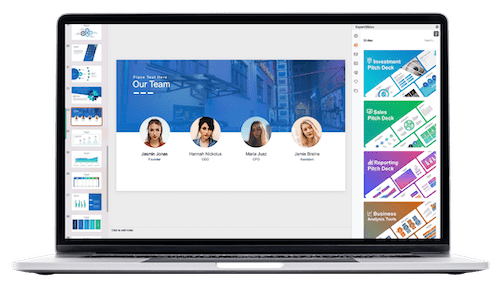
Check out the full video: Storytelling in PowerPoint: Learn McKinsey’s 3-Step Framework
Copyright © 2024 ExpertSlides | Powered by ES Solutions GmbH





